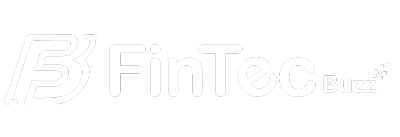The financial accounting system is a feature rich application serving the businesses involved in financial transactions. The simple definition of the Financial Accounting System is accounting is the bookkeeping process engaged in making a financial record of business transactions and developing statements with reference to the liabilities, assets, and operating results of a company. The system that maintains this financial information is known as the Accounting System. But you can consider accounting beyond just the act of keeping a list of debits and credits. It is the language of business and the language of all financial things. This is the financial accounting system we know today, but was it the same from the start? The answer is ‘No’ so let us have a look at the initial stages of the financial accounting system, how it started and how it has evolved over the years.
Historical traces of Accounting
Traces of the use of accounting can be found thousands of years ago in various parts of the world. The earliest proofs of accounting of this language are found in Mesopotamian civilization. The people of civilization kept the earliest records of goods traded and received. It was also related to the early record-keeping of the Egyptian and Babylonian civilizations. They used more primitive accounting methods, keeping records that detailed transactions including livestock, animals, and crops. An Indian philosopher and economist named Chanakya wrote “Arthashasthra” during the Mauryan Empire in around the second century B.C. The book comprised of advice and details on how to maintain books of accounting.
The Bookkeepers
Bookkeepers most probably emerged while society was still in the deals and trade system that is pre-2000 B.C. rather than a cash and commerce economy. Ledgers from these occasions read like narratives with descriptions and dates of trades made or terms for services rendered.
All of these transactions were kept in individual ledgers, and if a dispute emerged, they provided proof when matters were brought before magistrates. Even though tiresome, this system of detailing every agreement was ideal because long periods of time could pass before transactions were finished. Banking
Improved Ledger
As currencies became available and merchants and tradesmen started to build material wealth, bookkeeping also evolved. At that point, business sense and capacity with numbers were not always found in one individual, so math-phobic merchants would utilize bookkeepers to maintain a record of what they owed and who owed them.
Until the late 1400s, this information was still arranged in a narrative style with all the numbers in a single column, regardless of whether an amount was owed, paid, or otherwise. This is known as single-entry bookkeeping and is like what many of us do to keep track of our checkbooks.
It was required for the bookkeeper to interpret the description of every entry to conclude whether to deduct or add it when calculating something as simple as monthly profit or loss. This was a very time consuming and inefficient approach to go about tallying things. fintech news
The father of accounting
Luca Pacioli, proceeding in the custom of monks and also performing high-level scientific and philosophical research in the 15th century, he revamped the common bookkeeping structure and laid the groundwork for modern accounting. Italian monk Luca Pacioli is known as the father of accounting, published a textbook called “Summa de Arithmetica, Geometria, Proportioniet Proportionalita” in 1494, which showcased the advantages of a double-entry system for bookkeeping. The thought was to list an entity’s resources separately from any claims upon those resources by other entities. In the simplest form, this implied creating a balance sheet with separate debits and credits. This innovation made accounting more efficient and gave a clearer picture of the overall strength of a company. This picture was only for the owner who hired the bookkeeper. The general public was not given a chance to see these records.
Coming to America
With European colonization, bookkeeping relocated to America. Although it was sometimes referred to as accounting, bookkeepers were constantly doing basic data entry and calculations for business owners. The businesses in question were small enough that the owners were personally involved and aware of the conditions of their organizations. They didn’t require accountants to develop complex financial statements or cost-benefit analysis.
The American Railroad
The appearance of corporations in the United States and the creation of the railroad were the catalysts that transformed bookkeeping into the act of accounting. Among the two factors, the railroad was the most powerful. To get goods and individuals to their destinations, you require distribution networks, fare collection, shipping schedules, competitive rates, and some way to evaluate whether this is entirely being done in the most efficient manner possible. Enter accounting with its financial statements, cost estimates, operating ratios, production reports, and a multitude of other metrics to give organizations the data they require to make informed decisions.
The railroad additionally shrank the country. Business transactions could be settled in a matter of days instead of months, and information could be passed from city to city at a much higher speed. Even time didn’t run uniformly across the nation before the railroad. Previously, each township decided when the day started and ended by a general consensus. This was changed to a uniform system because it was necessary to have goods delivered and unloaded at specific stations at predictable times.
This shrinking of the nation and the introduction of uniformity encouraged investment, which, in turn, put more spotlight on accounting as a subject. Up to the 1800s, investing had been either a game of knowledge or of luck. Individuals acquired issues of stock in organizations with which they were well-known, either by knowing the industry or knowing the owners, or they blindly invested where their relatives and friends encouraged them to invest. There were no financials to check if you wanted to invest in a corporation or company that you knew nothing about. The risk of this type of investing made it an activity for the wealthy, a sport of a rich man with the taint of gambling. This image has never completely faded.
The Initial Financials
Anxious to attract more capital to expand their operations, corporations started to publish their financials in the form of an income statement, balance sheet, and cash flow statement.
Investment capital from sources outside the organization turned out to be more important than what was provided by the individual owners who had pioneered the business. Despite the fact that bringing in this investment capital increased the range of operations and profits for most corporations, it additionally increased the pressure on the management to please their new bosses, the shareholders. For their part, the shareholders were not able to trust management completely, so the requirement for independent financial reviews of the operations of a company became apparent.
Accounting as a Profession
Accountants were already important for attracting investors, and they immediately became essential for maintaining investor confidence. The profession of accounting was recognized in the year 1896 with a law stating the title of a certified public accountant (CPA) that would only be given to individuals who passed state examinations and had three years of experience in the field. The formation of professional accountants came at an opportune time. Less than 2 decades later, the demand for CPAs would skyrocket as the U.S. government, in need of money to fight a war, began charging income tax.
Accounting Today
Technology has changed the manner in which we look at accounting today. Financial Accounting System today have empowered accounting professionals. We no longer need to struggle with keeping detailed records of cash or commodity transactions by hand.
Since the first records were kept in America, bookkeepers have utilized a number of different tools to help in their profession. The adding machine in 1890 helped early accountants in calculating receipts faster, and they were able to quickly reconcile their books. When the first computer was released by IBM in 1952, accountants were among the first to use them. And recent emergence in technology has taken accounting into the domain of computer software like Quickbooks. These new advancements are substantially more intuitive, helping accountants do their job faster and with more ease.
Emerging Trends in Financial Accounting System
- The Jump in the use of Cloud Accounting
It was estimated that over 90% of small and medium enterprises will utilize cloud accounting software by the end of 2017. Cloud technology has been growing rapidly in the recent past and has been accepted widely by numerous industries, including accounting.
- Increase in Automation
Another significant trend in the disruption of accounting is the adoption of automation and the vanishing of manual processes. With the advent of automation, electronic documents and modern software solutions, many organizations are now able to eliminate manual data entry processes. Ultimately, this will convert into a faster processing time, more timely data, less human error and huge cost reductions for the company.
- Rise of Data Analytics
The development of data analytics means that more significant insights can be derived from existing data in organizations. Traditionally, we depend on accounting data from balance sheets and financial statements to understand the financial health and performance of the business. With an intelligent application of data analytics, management presently can potentially have even deeper and greater insights about the organizations. And with the advancement of artificial intelligence and machine learning, we can be sure that the quality and value of insights will only improve over time.
- Unbundling of Accounting Software
Many cloud accounting software today enables accountants to develop customized packages to suit the requirements of the clients. No longer will you need to depend on accounting packages that offer total solutions to financial management. Rather, if you only need some features, you can create personalized solutions by adding on different applications to generate custom made solutions to suit your requirements. Moreover, the shift to the cloud has resulted in an increase in emphasis on the automation of workflow and the improvement in software automatically turns your numbers into data, handles your bookkeeping and provides you with the kind of data that you need in real-time.
- Transforming Accounts into Consultants
Other than changes in software and technology, we are also observing changes in traditional practices like billing. Generally, you might be used to billing on a fixed hourly basis. But presently, we are seeing more practitioners switching to a new model, ‘value-pricing model’ to charge their clients. In value pricing, the maximum amount that a client needs to pay for a project is agreed up-front between the client and consultant. What this means is that clients get a price, certainty up-front. Simultaneously, it rewards the accountant if he is efficient in his work. This change also means that accountants are rewarded not just for the number of hours they clock, but also the productivity and real value that they can bring to their clients.



